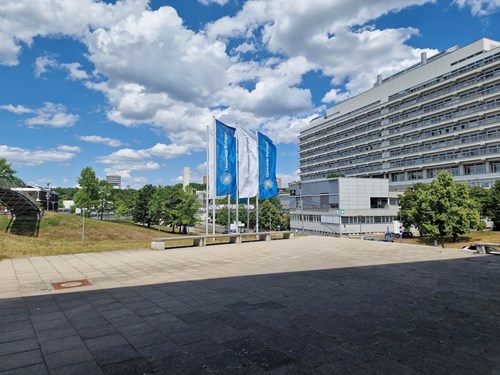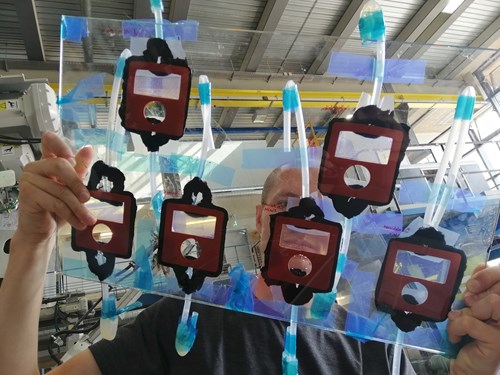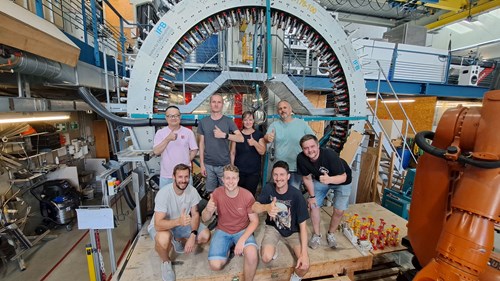Even in the hot summer, scientists are not idle, but devote themselves to research and establishing new collaborations. The science team of our research group is at the beginning of a possible exciting collaboration with colleagues from the German University of Stuttgart. In the Institute of Aircraft Design (IFB – Institut für Flugzeugbau) German scientists are working on preparing composites as construction materials for aerospace.
From the 10th to 14th of July 2023, Dr. Richard Krumpolec, Dr. Dana Skácelová, and Jianyu Feng, with the group leader Assoc. Prof. Dušan Kováčik did pilot testing in the German laboratories. The trip aimed to determine the applicability of plasma surface treatment in solving problems with the preparation and properties of composites. The objective was to improve the resulting composites' adhesion and overall mechanical properties.
"Before the pilot-testing experiments, detailed planning at the CEPLANT center was necessary to prepare suitable instrumentation and apparatus capable of transport to Stuttgart. This required close communication with colleagues from the IFB in the form of several planned online meetings," says Dr. Krumpolec, who coordinated this new venture.
During experiments, various materials were processed – natural (flax fabrics, impregnated flax fibers, cellulose fibers) and artificial (glass fibers, glass fiber fabrics, carbon fibers, and recyclates from carbon composites). Composites are made from these materials. The researchers used DCSBD plasma source and its modifications under various conditions. They chose the type of discharge and process parameters according to the sample type.
Dr. Skácelová comments, "We also found the trip interesting. We faced the challenge of plasma treating a kilo of recycled carbon composite chips. Until now, our volumes have been in the gram range! In addition, it is a highly conductive material that sputtered easily. It had to be handled well with caution and away from electrical equipment. So, we left all the equipment inside the room, and the plasma treatment was done outside, on the balcony."
The researchers are now awaiting the results of detailed tests on the mechanical properties of the prepared composites and look forward to further collaboration.
Group photo in front of the braiding machine at the University of Stuttgart. In top row persons from PNB group (from left to right): Jianyu Feng, M.Sc.; Richard Krumpolec, PhD.; Dana Skácelová, Ph.D. and Dušan Kováčik, Assoc. Prof. In bottom row persons from IFB: Florian Helber, M.Sc.; Johannes Baur, M.Sc.; Johannes Bauer, M.Sc. and Jens Take, M.Sc.








